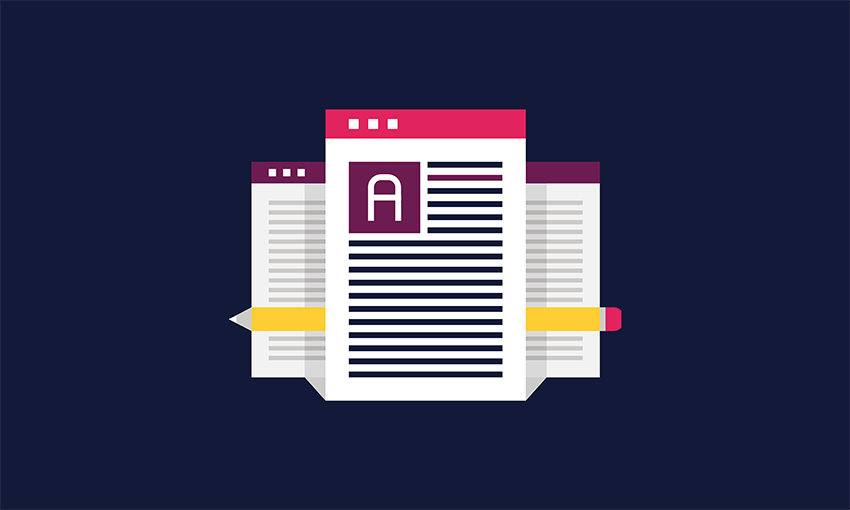Building a More Accessible OIT: Written Communication

Editor’s Note: This article is the fourth and final article in our series, Building a More Accessible OIT, which explores how we can all make OIT more accessible to colleagues and customers with disabilities. In Part 3, we discussed how to create accessible virtual meetings and webinars.
Whether you’re writing a simple Slack message or a book-length report, accessible communication is always critical to reaching your audience.
Accessible communication employs a straightforward and concise style of writing that’s easy to understand. This ultimately benefits all readers, regardless of abilities.
In Part 4, the last article of our series, we demonstrate how to create accessible communication using 508 compliance standards and Web Content Accessibility Guidelines (WCAG). The guidelines provide information for creating inclusive content that consists of clear language and formatting.
Keep it Simple: Use Plain Language
Plain language is an essential aspect of accessible communication. The Plain Writing Act of 2010 requires federal agencies to communicate in a way that the public can understand.
Plain language is defined as writing that is clear, concise, well-organized, and follows best practices appropriate to the subject matter or target audience. It enables a reader to find, understand, and apply the information they need.
Plainlanguage.gov/guidelines/ provides a comprehensive set of standards that, in general, require the writer to:
- Use familiar, short, concrete words (e.g., “use” rather than “utilize”).
- Choose simple words and phrases (e.g., “send,” rather than “disseminate;” “try,” instead of “endeavor”).
- Keep sentences, phrases, and paragraphs concise (e.g., “several” instead of “a number of”).
- Use a conversational tone (e.g., writing like you talk, using contractions).
- Avoid jargon and minimize abbreviations (e.g., write for your audience; use words they’ll understand).
Plain language guidelines are useful for most forms of digital communication, such as social media posts, websites, and electronic documents. Whichever format your content takes, be sure to:
- Include descriptive and concise titles, headings, and links that make sense out of context. If you typed a heading on a blank page, would you understand what content it covers?
- Proper context allows readers to know where a link will take them and what a document or section of a text is about. This is especially helpful for screen reader users who skip ahead to headlines or links to understand the flow of a document before diving into the entire text. For example, a link that reads “Learn more about CMS,” is more specific than simply “Learn more.”
- Avoid duplicate titles, headings, and links. If all links say, “click here,” a screen reader user won’t have enough information to know where each link will lead or how to distinguish one from another.
Keep it Inclusive: Use People-First Language
In most cases, accessible communication should use people-first language. People-first (or person-first) language is an inclusive and respectful way of communicating that refers to the individual rather than their disabilities. It consists of phrases like, “people with disabilities” rather than “disabled people.”
In some communities - such as the deaf community and the autistic community - “identity-first” language is widely preferred. For some, using identity-first language can be a way of showing community pride or expressing the idea that a condition such as autism is considered an essential part of the self.
When possible, ask for guidance from members of the community you’re writing about to determine if identity-first language might be more appropriate. Otherwise, it’s best to err on the side of people-first language.
Keep it Reader-Friendly: Use a Logical Format and Layout
Accessible communication is easy to follow and helps the reader quickly determine the subject matter and topics covered. The layout is well-structured, encouraging the reader to continue reading.
To obtain a reader friendly format and layout, be sure to:
- Use WCAG guidelines for fonts and text sizes, including:
- An accessible sans-serif font, which means a font without tails in the letter strokes. Some examples are Arial, Helvetica, Tahoma, and Verdana.
- Appropriate text sizes. The font size should be at least 10-point for standard text. Large text is defined as 14-point or larger when bolded or 18-point or larger when not bolded.
- Reserve underlining for links alone.
- Limit the use of italics and all caps.
- Avoid walls of text. Break up paragraphs and sections with bullets, numbers, and whitespace.
- Use the built-in style features of tools like Word, Google Docs, and PowerPoint (e.g., Title, Heading 1, Heading 2, etc.). They help screen reader users recognize titles and headings and understand the document structure.
- Follow WCAG color contrast and image guidelines.
Contact your Clearance Officers to ensure all documents and presentations are compatible with assistive technology and compliant with Section 508.
Download our Accessible Communication Checklist to easily reference the tips in this article. As May ends, continue celebrating Global Accessibility Awareness Day by practicing the skills you’ve learned in this series.
Other Stories in the “Building a More Accessible OIT” Series:

